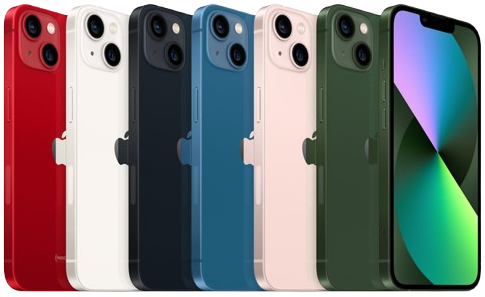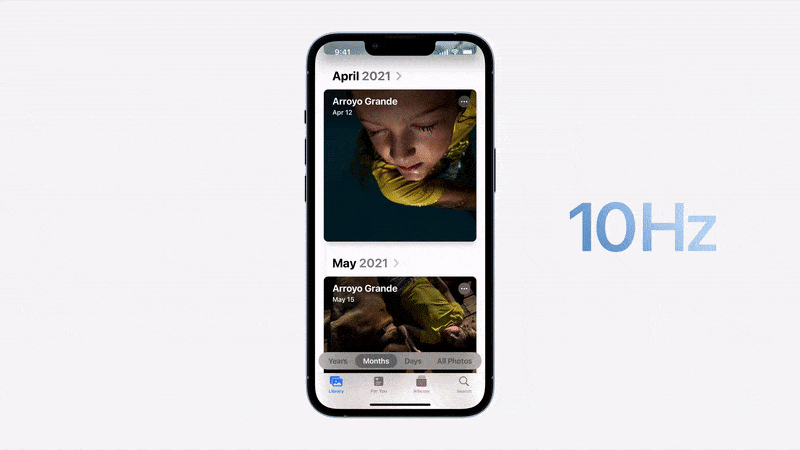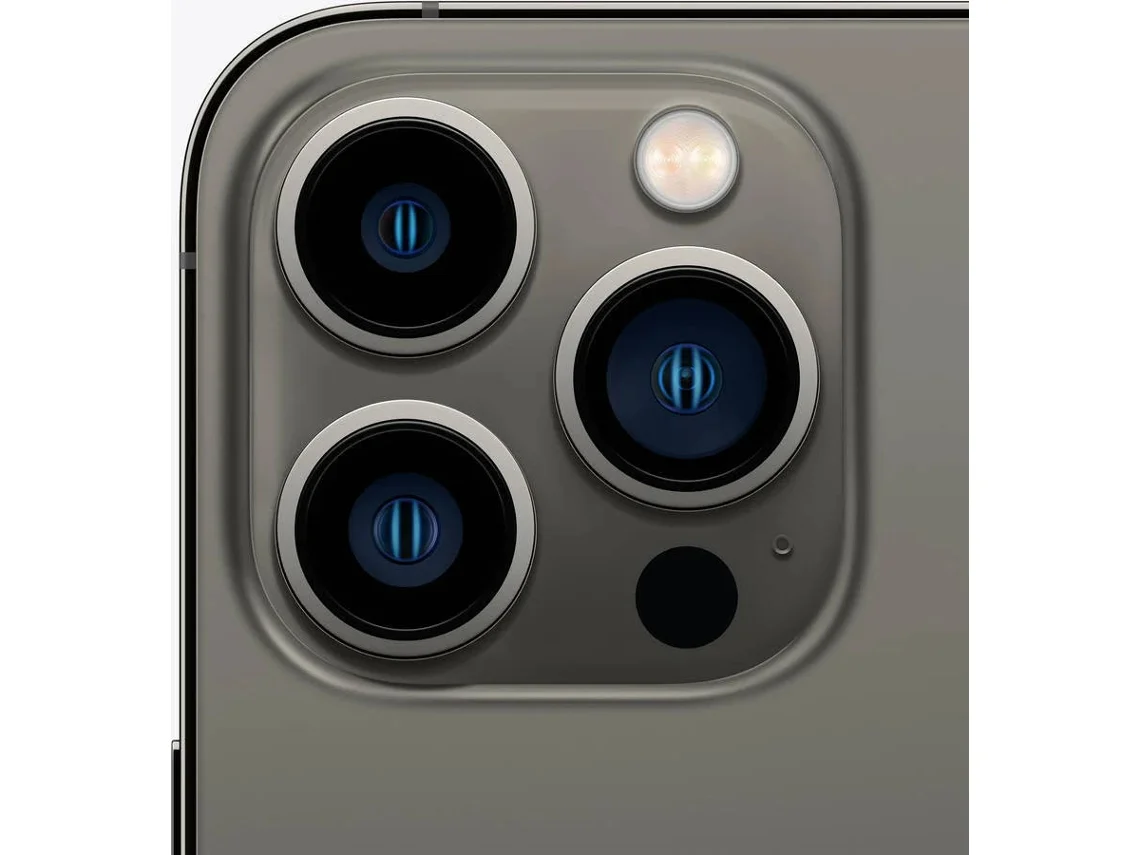
The iPhone 13 vs iPhone 13 Pro debate remains relevant in 2025 as these models continue to offer exceptional value for users seeking reliable performance, premium design, and impressive cameras. While both devices were launched in 2021, their features still make them excellent contenders in the mid-range smartphone market. Let’s dive into a detailed comparison to help you choose the best option.
Table of Contents
- Design
- Display
- Performance
- Speakers
- Cameras
- Battery Life
- Apple Intelligence
- Pricing
- Comparison Table
- Conclusion
Let’s dive in!
Design
Build Quality and Colors
The iPhone 13 features an aluminum frame paired with a glossy glass back, while the iPhone 13 Pro upgrades to a stainless steel frame and a matte glass back. The iPhone 13 is available in vibrant, attention-grabbing colors like Product(RED), Blue, Green, Pink, Starlight, and Midnight, appealing to users who enjoy bold and dynamic tones. On the other hand, the iPhone 13 Pro comes in more subdued and professional shades such as Graphite, Gold, Silver, and Sierra Blue, which convey a more refined aesthetic.


Both devices showcase Apple’s iconic design language, but the materials add a distinctive touch to their overall feel.
- The matte glass on the iPhone 13 Pro feels more premium and smooth to touch but can be slippery.
- The glossy glass on the iPhone 13 offers better grip, making it less likely to slip out of your hand.
Weight and Comfort
The iPhone 13 Pro weighs 204g, nearly 20% heavier than the 174g of the iPhone 13. This difference comes from the Pro’s stainless steel frame and larger battery. While the additional weight adds to its premium feel, some users might find the iPhone 13’s lighter build more comfortable for extended use.
Camera Module
A subtle but important distinction lies in the camera module sizes. The iPhone 13 features smaller lenses, resulting in less wobble when placed on a flat surface. The iPhone 13 Pro, with its triple-camera setup, has larger lenses that make it more unstable on a desk.
Display
Brightness and Efficiency
Both models feature stunning Super Retina XDR OLED displays, but the iPhone 13 Pro has an edge in several key areas:
- The iPhone 13 Pro reaches up to 1,000 nits of typical brightness, while the iPhone 13 caps at 800 nits.
- Both displays peak at 1,200 nits when viewing HDR content, offering brilliant visuals for movies and photos.
- The iPhone 13 Pro’s display is also more power-efficient, consuming less energy and generating less heat, which can improve battery life and overall performance during prolonged usage.
Refresh Rate

The iPhone 13 Pro features an adaptive ProMotion display with a refresh rate ranging from 10Hz to 120Hz. This allows the screen to dynamically adjust the refresh rate depending on the content. For static content like reading or browsing, the refresh rate drops to 10Hz to save battery life. However, when playing games or interacting with dynamic content, the refresh rate increases to 120Hz, offering smoother motion but consuming more power.
iPhone 13 vs iPhone 13 Pro Performance
The iPhone 13 and iPhone 13 Pro are both powered by the A15 Bionic chip, which offers excellent performance for general use, gaming, and demanding tasks. However, there are important differences in the GPU and RAM that make the iPhone 13 Pro a superior option for those seeking better graphics and multitasking performance.
The iPhone 13 is equipped with a 4-core GPU and 4GB of RAM, while the iPhone 13 Pro upgrades to a 5-core GPU and 6GB of RAM. This extra GPU core in the Pro model makes a significant difference in tasks like gaming, where the iPhone 13 Pro delivers smoother performance, higher frame rates, and better overall graphical rendering. Whether you’re playing graphics-intensive games or using applications that require heavy processing power, the Pro’s additional GPU core and RAM ensure a more fluid and responsive experience.


In everyday use, both phones handle multitasking, browsing, and video editing with ease, but the iPhone 13 Pro can manage more demanding workflows, offering a smoother experience when running several apps simultaneously or performing resource-heavy tasks. The extra RAM also helps in keeping more apps running in the background without a noticeable slowdown.
Speakers
Both the iPhone 13 and iPhone 13 Pro are equipped with stereo speakers that deliver clear, immersive sound. The speakers in both models are quite similar in terms of audio performance, and both offer improvements over the previous generation (iPhone 12). These improvements include slightly higher volume and richer bass, making the audio experience more enjoyable, especially when watching videos or listening to music without headphones.
iPhone 13 vs iPhone 13 Pro Cameras
When comparing the cameras of the iPhone 13 and iPhone 13 Pro, there are several key differences to note. The iPhone 13 features the same main camera as the iPhone 12 Pro, with an f/1.6 aperture, for improved low-light performance. Additionally, its ultra-wide camera has been enhanced, offering better performance compared to its predecessor. The iPhone 13 Pro, however, takes things further with its triple-camera system. This includes a 3x telephoto lens with an f/2.8 aperture, which the iPhone 13 lacks.
In dim lit scenes photography, the iPhone 13 Pro’s ultra-wide camera is a clear winner. It has an f/1.8 aperture, significantly wider than the iPhone 13’s f/2.4, allowing it to capture much more light. Furthermore, the Pro model includes a LiDAR sensor, enabling night portrait shots, a feature absent from the standard iPhone 13. The Pro also introduces a macro mode, allowing users to focus on subjects at very close distances using its ultra-wide lens.
Both models feature 12MP sensors across all their cameras. But does the megapixel count actually matter when it comes to image quality? The answer might surprise you. Click here to read: “Does Megapixel Matter? Here’s What You Need to Know.” and find out how much of an impact megapixels really have on your photos.
Pro Features
Lastly, the iPhone 13 Pro supports ProRAW and ProRes video recording, allowing photographers and videographers to capture professional-grade images and videos with greater flexibility in editing. This feature is not available on the iPhone 13, making the Pro model the go-to choice for content creators. Want to learn more about ProRes? Then click here
Battery Life
When it comes to battery life, both models offer solid performance, but the iPhone 13 Pro has the advantage due to its greater energy efficiency. The iPhone 13 has a 3,240 mAh battery, while the 13 Pro features a 3,095 mAh battery. Despite the slightly smaller battery on the iPhone 13 Pro, its performance is more optimized due to ProMotion technology and the more efficient display. This means the iPhone 13 Pro can last longer on a charge, especially during tasks that require heavy graphic processing.
In daily use, both models can provide around 10-11 hours of web browsing or continuous video playback. However, the iPhone 13 Pro stands out for its more balanced power consumption, thanks to its adaptive display that automatically adjusts the refresh rate. For users seeking more battery life during intensive usage, the iPhone 13 Pro might be the better option. On the other hand, the iPhone 13 still offers excellent battery life and is a solid choice.
There’s also a lot of misinformation about lithium-ion batteries that can affect how people view battery performance. To clear up some of the biggest myths and provide practical insights, read my article on lithium battery myths. It’s a great way to better understand your device’s capabilities.
Apple Intelligence

Apple’s latest feature, Apple Intelligence, has become a highlight in newer iPhone models, offering personalized AI-driven suggestions and enhanced task automation. Unfortunately, neither the iPhone 13 nor the iPhone 13 Pro supports this feature, making them slightly less future-proof in this regard. If Apple Intelligence is a priority, you may need to consider a newer device. Click here to see my iPhone Buying Guide for 2025 including other options.
Pricing in 2025
The iPhone 13 is priced at $360, while the iPhone 13 Pro costs around $410. For just $50 more, the Pro offers significant upgrades in display, cameras, and build quality, making it a tempting choice for those seeking added value.
Comparison Table
| Feature | iPhone 13 | iPhone 13 Pro |
|---|---|---|
| Colors | Vibrant and Playful | Professional and Elegant |
| Build | Aluminum, Glossy Finish | Stainless Steel, Matte Finish |
| Display | 6.1″ Super Retina XDR, 800 nits (peak 1200) | 6.1″ Super Retina XDR, 1000 nits (peak 1200) with ProMotion (120Hz adaptive refresh rate) |
| Cameras | Dual 12MP | Triple 12MP |
| Battery Life | ~7.5 hours heavy use | ~8 hours heavy use |
| Processor | A15 (4-core GPU) | A15 (5-core GPU) |
| Battery Life | ~8 hours heavy use | ~8.5 hours heavy use |
| Processor | A16 (4nm) | A18 (3nm) |
| RAM | 4GB | 6GB |
| Fully Supports AI | No | No |
Conclusion: iPhone 13 vs iPhone 13 Pro
The iPhone 13 vs iPhone 13 Pro decision comes down to what matters most to you in 2025. Here’s a breakdown:
- iPhone 13 Pro (for just $50 more):
- More premium design
- ProMotion display
- Higher brightness
- More efficient screen
- Extra GPU core
- 2GB more RAM
- Superior cameras
- iPhone 13 (great value option for budget-conscious users):
- Lighter and more affordable
- Glossy glass back
- Solid performance
Ultimately, the iPhone 13 Pro will likely be the better choice for most people due to its enhanced features and performance, particularly if you value a high-quality display, camera improvements, and additional power for gaming or multitasking. On the other hand, the iPhone 13 is an excellent choice for users looking to save money while still getting a reliable and capable device, particularly if weight and grip are important.
If you’re still unsure which iPhone is the best fit for you in 2025 or want to explore more options, click here to see my iPhone Buying Guide for 2025, where I walk you through all the models and help you choose the one that best fits your needs.






1 thought on “iPhone 13 vs iPhone 13 Pro: Which Is the Best Choice in 2025?”